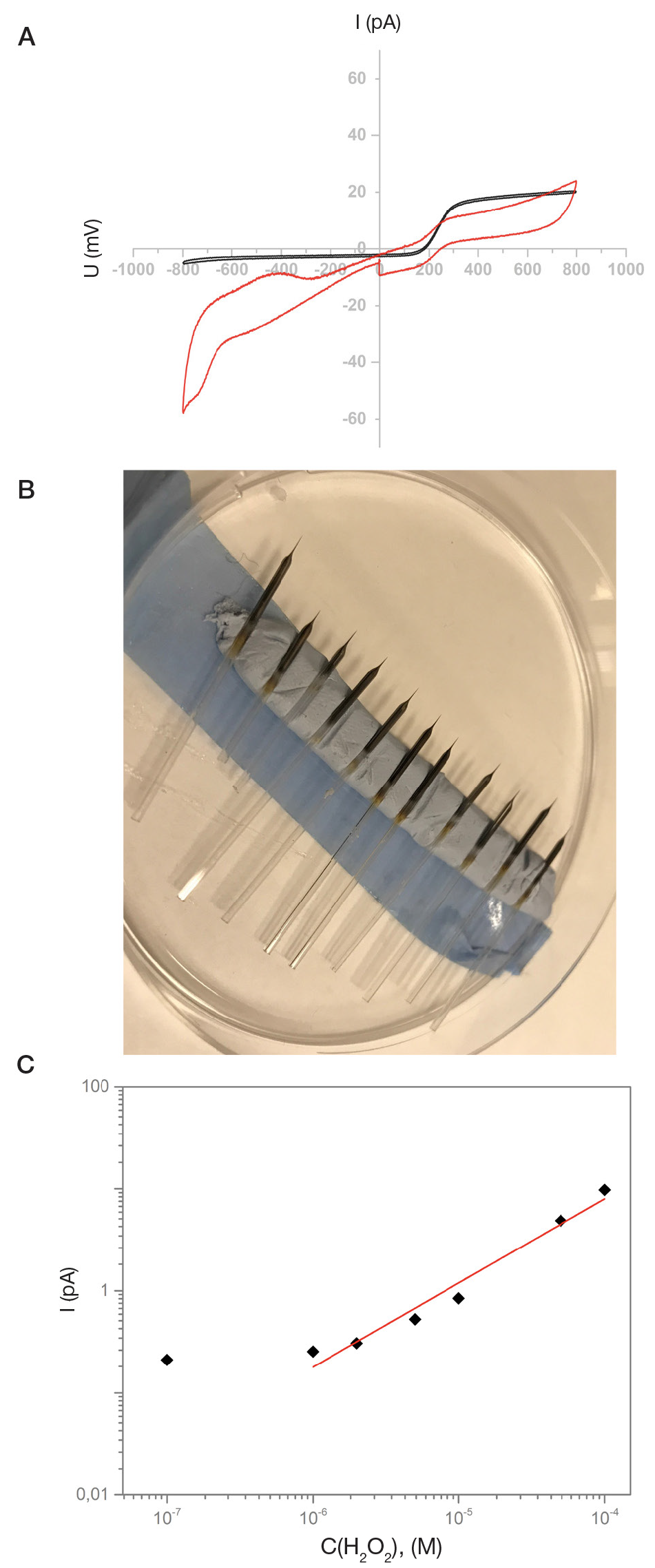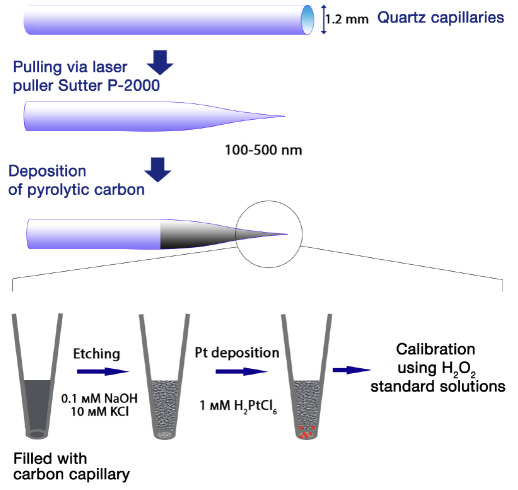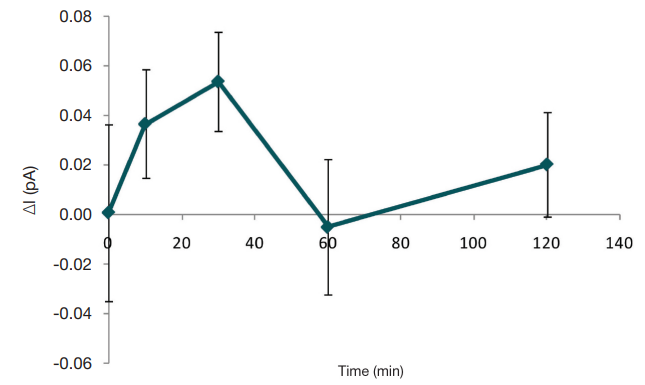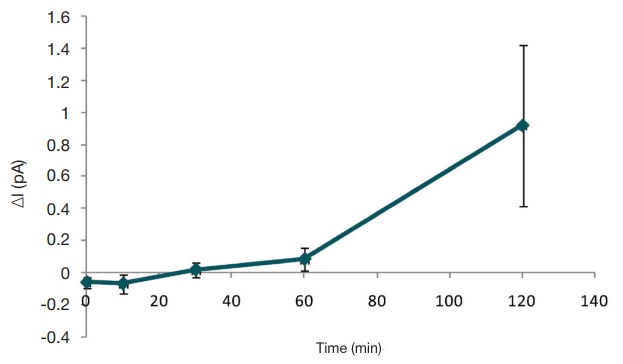
ORIGINAL RESEARCH
Detecting reactive oxygen species in biological fluids by platinum nanoelectrode applying amperometric method
1 Lomonosov Moscow State University, Moscow
2 National University of Science and Technology "MISiS", Moscow
3 Medical Nanotechnology LLC, Moscow
4 Helmholtz Institute of Ophthalmology, Moscow
5 Mendeleyev University of Chemical Technology of Russia, Moscow
6 Department of Medicine, Imperial College London, London, United Kingdom
7 WPI Nano Life Science Institute (WPI-NanoLSI), Kanazawa University, Kanazawa, Japan
Correspondence should be addressed: Alexander N. Vaneev
Leninskie gory, 1 bl. 11B, Moscow, 119991; moc.liamg@rdnaskela.veenav
Funding: the study was supported by the Ministry of Education and Science of the Russian Federation in the context of the Agreement # 14.575.21.0147 (project ID RFMEFI57517X0147).



